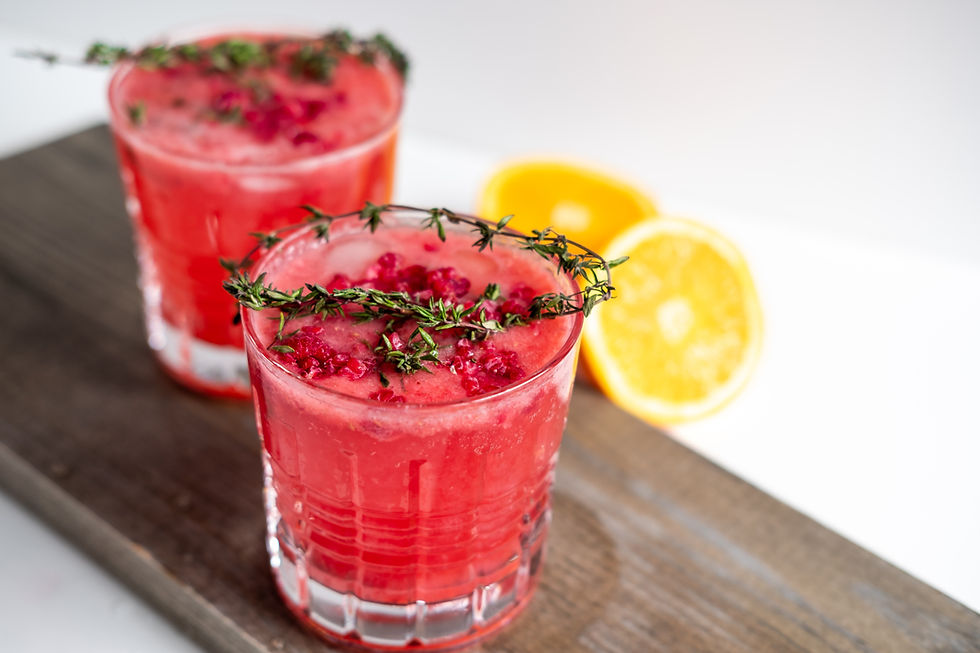Healthy weight loss this summer
- By Chrissy Denton
- Jul 5, 2021
- 3 min read

In recent years, the prevalence of overweight and obesity has dramatically risen where some of the major contributors to this increase are the lack of physical activity as well as the type and quantity of foods being eaten. Weight loss in the form of losing excess body fat needs to be done in a healthy and safe way. Many of us turn to the popular advertised diet programmes that often focus on limited nutrients and foods higher in fats and proteins such as the ‘Atkins’ & ‘South beach’ diets. These may result in initial weight loss, but soon after the diet is stopped the weight piles back on again. Each time we diet, the body finds it more difficult to lose the weight and easier to gain it – hence the term ‘yo-yo dieting’.
Points to remember about energy
· All food contains energy
· Energy is measured in kilojoules (kcal) or calories (cal)
· Larger portion sizes of food contain larger amounts of energy
· Fat contains 2.25 times more energy per gram than carbohydrate or protein
· Excess energy usually gets stored as fat
· By reducing fat consumption and increasing fibre consumption, we can reduce the amount of energy we eat
· A low-carb diet substitutes fat for carbohydrate and can therefore increases energy intake
· Alcohol can significantly contribute to energy storage
· Most diets fail because they don’t factor in energy
Guidelines for Losing Weight:
Increase energy expenditure and reduce energy intake (daily kilojoules)
Aim for a healthy weight loss of 0.5-1kg per week – anything faster and you will risk losing muscle mass and depleting your glycogen reserves. The best strategy is to reduce your caloric intake by no more than 500 kcal per day and maintain or increase activity levels
Consume 6 small meals during the day rather than 3 larger meals. This will maintain energy levels, prevent hunger and avoid fat storage.
Reduce intake of refined carbohydrates such as white breads, cakes & biscuits (anything with white flours, sugars & wheat). Choose high fibre carbohydrate foods that will fill you up, satisfy your appetite and keep hunger at bay e.g.wholemeal breads & cereals, brown rice, beans & lentils, fresh fruit and all kinds of vegetables
Reduce your unhealthy fat intake – Swap high processed fat foods for healthier fat nutritious alternatives such as nuts, seeds olive oils, avocados and oily fish
Fluids
Drink at least 8 glasses of water per day, plus extra during exercise (and in the heat)
Avoid sugary drinks such as soft drinks, energy drinks and juices
Minimise alcohol consumption to 1-2 nights per week with 2-3 drinks per serving
Sports drinks contain high amounts of sugars and should only be used during high intensity exercise over 1 hour
Reduce coffee consumption to 1-2 cups per day and add in some non-caffeinated herbal teas for extra hydration and nutrients
Let’s Get Physical
Successful weight loss comes from maintaining a healthy diet and participating in regular exercise. It’s important to reduce your energy input (food) and increase your energy output (exercise) in order to maintain a healthy weight loss.
Aim for:
At least 30mins of exercise per day
Include a combination of cardiovascular and weight training exercises
Try something different such as yoga, swimming, dance or bike ride
Choose to walk to work or take the stairs instead of the lift
For further nutrition advice and personalised eating plans please contact our nutritionist Chrissy Denton.
Be sure to check out South Stream Market’s healthy and free from section for healthy food options and special dietary choices.
Want to find out more or ask a question? Click Here to get in touch with Chrissy.

















Alpino Casino ti copre le spalle! Il nostro servizio clienti è disponibile 24 ore su 24, 7 giorni su 7, per garantire un'esperienza di gioco fluida e senza preoccupazioni. Che tu abbia una Alpino Casino domanda veloce o bisogno di assistenza dettagliata, il nostro team è pronto ad aiutarti in qualsiasi momento. Unisciti a Slotimo oggi stesso e prova la nostra dedizione senza pari alla tua soddisfazione!